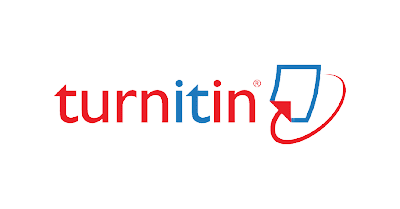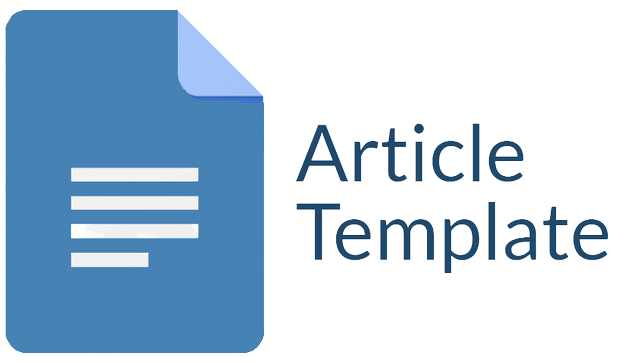ANALISIS EFEKTIVITAS PENGGUNAAN MATERIAL DINDING PADA PEMBANGUNAN GEDUNG BERTINGKAT
Abstract
The development of science, especially in the field of construction, has produced various innovations, one of which is on wall materials that can support the effectiveness of work, especially in the construction of multi-storey buildings. It is realized that wall material can affect acoustic, thermal, and visual comfort levels. The choice of wall material has a direct impact on the environment where the use of environmentally friendly materials can reduce carbon footprint and construction waste. This study aims to analyze the effectiveness of the use of wall materials such as red brick, adobe and lightweight brick in terms of structural strength, cost and service life of the structure. To compare various alternatives, an assessment of each alternative consequence is carried out using a decision-making system. The results of the analysis showed that alternative 3 using lightweight brick obtained the highest value so that alternative 3 became the top priority of other alternatives to optimize the construction of high-rise buildings.
Downloads
References
Ace, S. (2002). Pendidikan, Investasi SDM dan Pembangunan.
Adhi, A. (2010). Pengambilan Keputusan Pemilihan Handphone Terbaik Dengan Anaylytical Hierarchy Process (AHP). Dinamika Teknik, IV(No. 2 Juli 2010).
Akbar, M. R., Mahmuddin, M., & Tripoli, T. (2021). Analisis Biaya Pekerjaan Sloof Pada Proyek Pembangunan Gedung BPJN Aceh. Journal of The Civil Engineering Student, 3(2). https://doi.org/10.24815/journalces.v3i2.12612
Asnudin, A. (2010). Pengendalian Sisa Material Konstruksi Pada Pembangunan Rumah Tinggal. Jurnal Mekanika Teknik, 12(3), 162–164.
Azizi, A., Salim, M. A., & Ramadhon, G. (2020). Analisis Daya Dukung Dan Penurunan Pondasi Tiang Pancang Proyek Gedung DPRD Kabupaten Pemalang. Jurnal Teknik Sipil : Rancang Bangun, 6(2). https://doi.org/10.33506/rb.v6i2.1148
Camelia, F. (2020). Analisis landasan ilmu pengetahuan dan teknologi. Susunan Artikel Pendidikan, 5(1).
de Oliveira, U. R., Marins, F. A. S., Rocha, H. M., & Salomon, V. A. P. (2017). The ISO 31000 standard in supply chain risk management. In Journal of Cleaner Production (Vol. 151). https://doi.org/10.1016/j.jclepro.2017.03.054
Dehghanian, P., Fotuhi-Firuzabad, M., Bagheri-Shouraki, S., & Razi Kazemi, A. A. (2012). Critical component identification in reliability centered asset management of power distribution systems via fuzzy AHP. IEEE Systems Journal, 6(4). https://doi.org/10.1109/JSYST.2011.2177134
Faadhilah, H., & Budi Broto, A. (2022). PEMILIHAN PEMASOK PADA MATERIAL KONSTRUKSI. Jurnal Ilmiah Teknologi Infomasi Terapan, 9(1). https://doi.org/10.33197/jitter.vol9.iss1.2022.926
Handayani, J. T., & Angreni, I. A. A. (2020). Analisis Potensi Pemborosan Material dan Solusi Penanganannya pada Proyek Pembangunan Gedung Bertingkat (Studi Kasus : Proyek Gedung Bertingkat di Tangerang Selatan). Jurnal Teknik Sipil, 27(3). https://doi.org/10.5614/jts.2020.27.3.9
Herni Setiawan, T., & Ariadi, T. (2012). INDIKATOR KEBERHASILAN PROYEK PEMBANGUNAN BANGUNAN GEDUNG YANG DIPENGARUHI FAKTOR INTERNAL SITE MANAGER. Jurnal Teknik Sipil, 11(2). https://doi.org/10.24002/jts.v11i2.6
Kanyawan, O. E., & Zulfian, Z. (2020). Identifikasi Struktur Lapisan Bawah Permukaan Menggunakan Metode Geolistrik Tahanan Jenis sebagai Informasi Awal Rancang Bangun Pondasi Bangunan. PRISMA FISIKA, 8(3).
Leal, J. E. (2020). AHP-express: A simplified version of the analytical hierarchy process method. MethodsX, 7. https://doi.org/10.1016/j.mex.2019.11.021
Lolong, E., Ilat, V., & Tirayoh, V. (2019). PENERAPAN METODE TIME AND MATERIAL PRICING SEBAGAI DASAR PENENTUAN HARGA JUAL JASA PADA PT. SINAR GALESONG MANDIRI MALALAYANG MANADO. GOING CONCERN : JURNAL RISET AKUNTANSI, 14(4). https://doi.org/10.32400/gc.14.4.26335.2019
Marlince. (2018). Aplikasi Penentuan Karyawan Terbaik Metode AHP dan Metode Promethee. Jusikom Prima, 1(2).
Ningsih, R. O. P. (2020). Analisis Penerapan Keselamatan Dan Kesehatan Kerja (K3) Pada Proyek Konstruksi Bangunan Tinggi di Wilayah Kecamatan Banyumanik. Skripsi Program Studi Teknik Sipil, Jurusan Teknik Sipil, Fakultas Teknik, Universitas Negeri Semarang.
Oetomo, W., & Susanto, D. H. (2011). Analisis Keputusan Pemilihan Konstruksi Perkerasan Jalan dengan Metode Analytic Hierarchy Process (AHP) (Studi Kasus di Dinas PU. Bina Marga Kab. Lamongan ). EXTRAPOLASI ISSN : 1693-8259, Volume : 04 No. 01 Juni 2011.
Saaty, T. L. (2000). Fundamentals of Decision Making and Priority Theory With the Analytic. 478.
Shvetsova, O. A., Park, S. C., & Lee, J. H. (2021). Application of quality function deployment for product design concept selection. Applied Sciences (Switzerland), 11(6). https://doi.org/10.3390/app11062681
Sugiyanto, S., Arnaya, I. W., Ryanto, S. S., & Surya, A. A. B. O. K. (2021). Analisa Faktor Pemilihan Moda Transportasi Menggunakan Metode Analytic Hierarchy Process. Jurnal Teknologi Transportasi Dan Logistik, 2(1). https://doi.org/10.52920/jttl.v2i1.18
Sugiyanto, S., & Wena, M. (2020). PREDIKSI PRODUKTIFITAS KERJA PADA PEKERJAAN TANAH DAN PONDASI BANGUNAN TAK BERTINGKAT. BANGUNAN, 25(2). https://doi.org/10.17977/um071v25i22020p11-24
Sugiyono. (2018). Metode Penelitian Kuantitatif, Kualitatif dan R&D. Bandung: Alfabeta.
Sugiyono, D. (2020). Metode Penelitian Kuantitatif, Kualitatif, dan R&D.
Supriadi, A., Rustandi, A., Komarlina, D. H. L., & Ardiani, G. T. (2018). Analytical Hierarchy Process (AHP) Teknik Penentuan Strategi Daya Saing Kerajinan Bordir. In deepubplish.
Tantyonimpuno, R. S., & Retnaningtias, A. D. (2006). Penerapan Metode Analytical Hierarchy Process (AHP) pada Proses Pengambilan Keputusan Pemilihan Jenis Pondasi (Studi Kasus: Proyek Pembangunan Royal Plaza Surabaya). Jurnal Teknik Sipil, III(2).
Tanubrata, M. (2019). Bahan-Bahan Konstruksi dalam Konteks Teknik Sipil. Jurnal Teknik Sipil, 11(2). https://doi.org/10.28932/jts.v11i2.1407
Tominanto. (2012). Sistem Pendukung Keputusan Dengan Metode Analytical Hierarchy Process (AHP) untuk Penentuan Prestasi Kinerja Dokter pada RSUD. Sukoharjo. Infokes, 2(1), 1–15.
Utami, S., Ekasari, K., & Saputra, R. M. (2021). Penggunaan AHP guna penentuan prioritas penanganan permukiman tangguh bencana longsor. Jurnal Pengelolaan Lingkungan Berkelanjutan (Journal of Environmental Sustainability Management). https://doi.org/10.36813/jplb.4.2.498-512
Yu, M., Hu, S. Y., Cai, J. M., Guo, P. N., Li, H. B., & Xing, H. G. (2023). A comprehensive evaluation method for the site selection of new healthcare facilities in geological hazard-prone areas. Frontiers in Earth Science, 11. https://doi.org/10.3389/feart.2023.1121690
Copyright (c) 2024 Tiny Mananoma, Reynaldo Jeremy Sela, Femmy The

This work is licensed under a Creative Commons Attribution-ShareAlike 4.0 International License.
Jurnal allows anyone to compose, correct, and do derivative works, even for commercial purposes, as long as they credit for the original work. This license is the freest. It is recommended for maximum distribution and use of licensed material.
The submitted paper is assumed not to contain any proprietary materials that are not protected by patent rights or patent applications; The responsibility for technical content and protection of proprietary materials rests with the authors and their organizations and not the responsibility of journal or its editorial staff. The primary (first/appropriate) author is responsible for ensuring that the article has been viewed and approved by all other authors. The author's responsibility is to obtain all necessary copyright waivers to use any copyrighted material in the manuscript before submission.
Jurnal Pendidikan, Sains dan Teknologi allows the author(s) to hold the copyright without restrictions and allow the author(s) to retain publishing rights without restrictions. Jurnal Pendidikan, Sains dan Teknologi CC-BY-SA or an equivalent license as the optimal license for the publication, distribution, use, and reuse of scholarly work. Jurnal Pendidikan, Sains dan Teknologi allows the author(s) to hold the copyright without restrictions and allow the author(s) to retain publishing rights without restrictions. Jurnal Pendidikan, Sains dan Teknologi CC-BY-SA or an equivalent license as the optimal license for the publication, distribution, use, and reuse of scholarly work.
In developing strategy and setting priorities Jurnal Pendidikan, Sains dan Teknologi recognize that free access is better than priced access, libre access is better than free access, and libre under CC-BY-SA or the equivalent is better than libre under more restrictive open licenses. We should achieve what we can when we can. We should not delay achieving free in order to achieve libre, and we should not stop with free when we can achieve libre.
Jurnal Pendidikan, Sains dan Teknologi is licensed under a Creative Commons Attribution-ShareAlike 4.0 International License.
You are free to:
- Share a copy and redistribute the material in any medium or format
- Adapt a remix, transform, and build upon the material for any purpose, even commercially.
- The licensor cannot revoke these freedoms as long as you follow the license terms.






